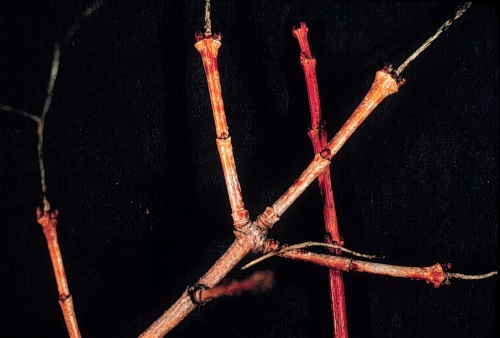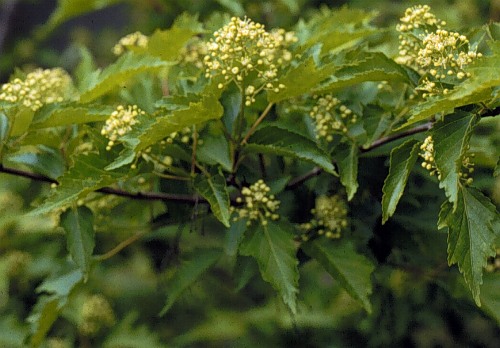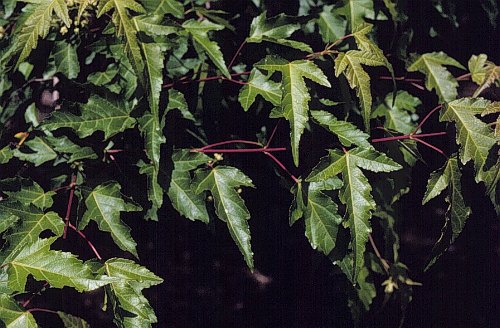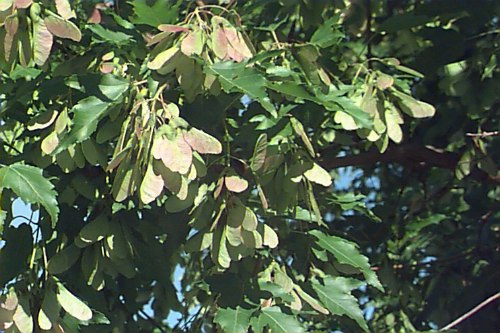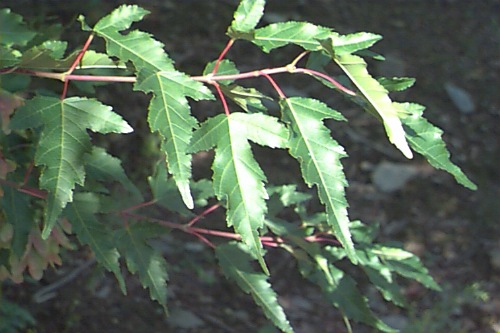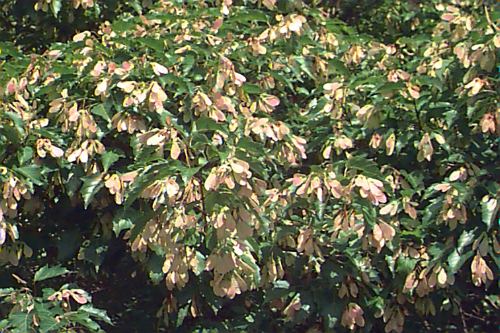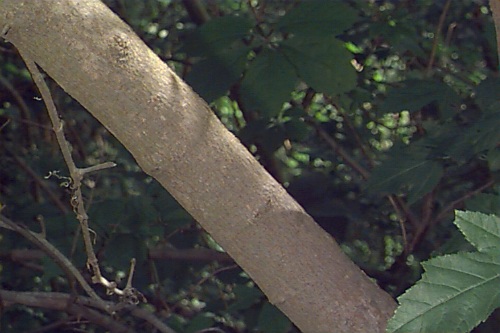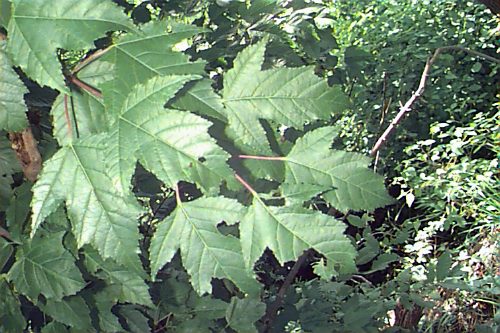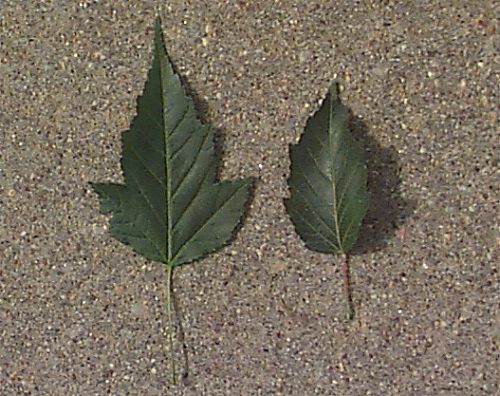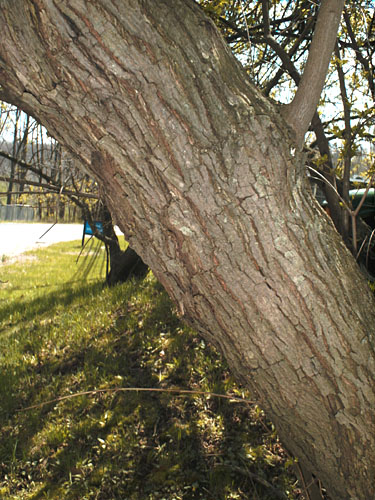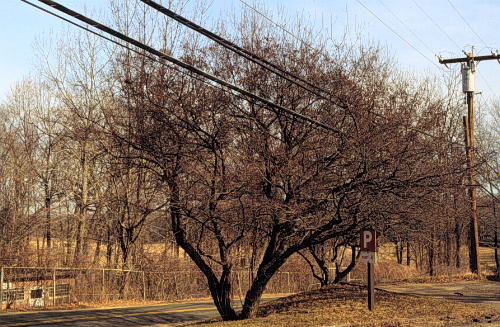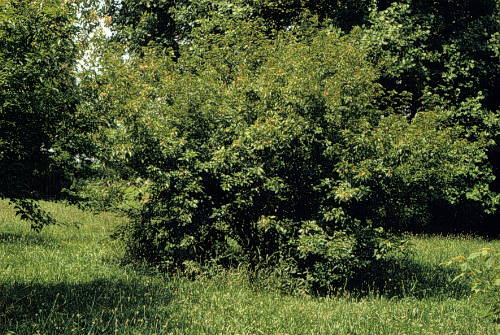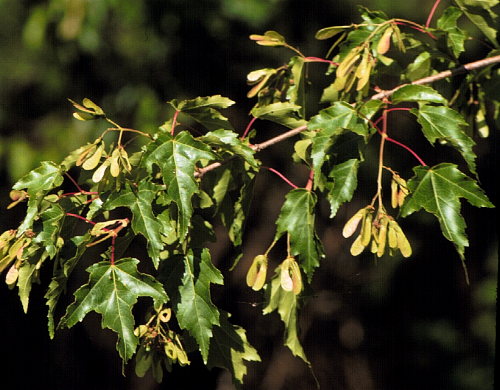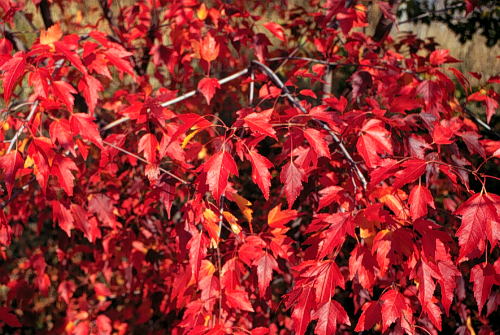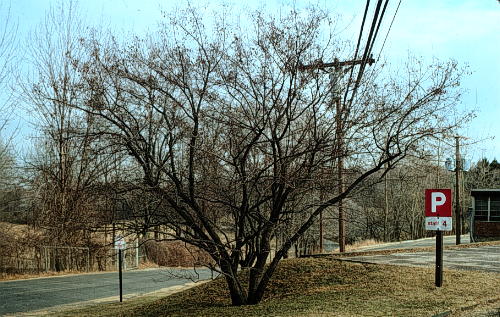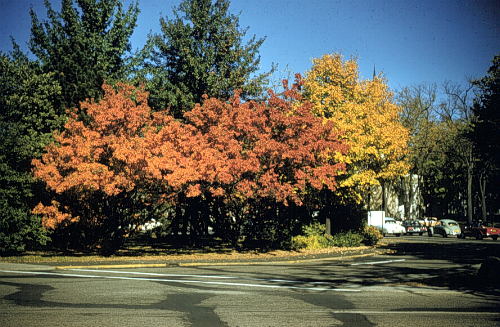Acer ginnala
Amur Maple
Aceraceae
ExpandHabitat
- native to parts of China, Manchuria and Japan
- hardy to zone 2
- Special Note: This species has demonstrated an invasive tendency in Connecticut, meaning it may escape from cultivation and naturalize in minimally managed areas. For more information, .
Habit and Form
- small tree, 15 to 20' tall
- deciduous
- broad, rounded outline, typically multistemmed
- medium to fine texture
Summer Foliage
- opposite, 1.5" to 3" long
- three-lobed with central lobe prominent
- medium to dark green
- early to leaf out in spring
Autumn Foliage
- typically showy red, but can be yellow (genotype dependent)
- colors early in fall
- colored foliage not held particularly long
Flowers
- small, pale yellow, in clusters in early spring
- fragrant
Fruit
- samaras 0.75" to 1" long
- wings nearly parallel
- reddish, especially in June and July
- samaras persist in winter
Bark
- grayish brown on truck and old branches
- young bark is gray, smooth and has darker striations; similar to serviceberry or silverbell
Culture
- performs best in colder climates (cool summers)
- soil adaptable
- easily transplanted
- can be pruned heavily
- full sun or partial shade
Landscape Uses
- small specimen or patio tree
- containers
- hedges or screens
- groupings or mini-groves
Liabilities
- relatively trouble-free
- can get verticillium wilt
- unwanted seedlings can be problematic
- persistent samaras; may be objectionable
ID Features
- leaf shape distinctive for a maple
- persistent samaras
- terminal bud absent
- buds rest on a small shelf
Propagation
- by seed
- by softwood cuttings, relatively easy for a maple
Cultivars/Varieties
'Compactum' (also known as 'Bailey's Compact') and 'Durand Dwarf' - More shrub-like than tree-like, these cultivars for dense, multi-stemmed plants usually not exceeding 5' (though larger plants are known).
Several forms have been selected for excellent red fall color and red fruit. Among them are 'Embers', 'Flame', 'Red Fruit' and 'Mandy' (Red Rhapsody™).
